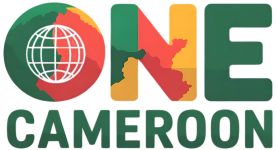Long before European explorers arrived on its shores, the territory now known as Cameroon was a mosaic of diverse peoples, kingdoms, and cultures shaped by centuries of migration, trade, and innovation. Archaeological evidence suggests human presence in the region dating back tens of thousands of years—hunter-gatherer groups roamed its forests and savannahs, leaving behind stone tools and rock art. Over time, waves of migration brought new populations—Niger-Congo speakers moved in from the west, Chadic languages spread from the north, and Bantu-speaking groups arrived from the east. These movements laid the foundations for the rich tapestry of ethnicities and languages found in pre-colonial Cameroon.
One of the earliest advanced societies in this area was the Sao civilization. Flourishing around Lake Chad between the sixth and sixteenth centuries CE, the Sao built fortified settlements, practiced ironworking, and produced distinctive pottery and terracotta figurines. Though centered to the north of modern Cameroon, Sao influence extended into northern regions, and their legacy can still be seen in local myths and place names. Concurrently, the Kanem-Bornu Empire—centered on present-day Chad and Nigeria—exerted political and economic influence over northern Cameroon. Through caravan routes, goods such as salt, cloth, and copper flowed across the Sahel, while Islam gradually spread into the region, leaving a lasting impact on local institutions and scholarly traditions.
Further south, highland forests and grasslands gave rise to the powerful kingdoms of the Western Grassfields. From around the seventeenth century onward, the Tikar, Bamileke, Bamum, Kom, and other groups established centralized monarchies. The Bamum Kingdom, for example, emerged in the late eighteenth century under King Nchare Yen and expanded through military conquests and diplomatic alliances. Its capital, Foumban, became renowned for its palace complex, elaborate wood carvings, and the later creation of a unique script—known as the Bamum or Shu-mom syllabary—developed by Sultan Ibrahim Njoya in the late nineteenth century. Similarly, the Bamileke chiefdoms established hierarchical societies with stratified lineages, elaborate festivals, and skilled artisans producing finely woven raffia cloth and detailed brass work.
Along the coast, rivers like the Wouri and Sanaga served as natural highways for trade and settlement. The Duala people became prominent traders, establishing villages such as Bonanjo and Akwa near the estuary of the Wouri River. By the fifteenth century, European sailors—including the Portuguese—began trading along this stretch of coast, exchanging goods such as ivory, gold, and, tragically, enslaved people. While these coastal kingdoms had relatively sparse political structures compared to the highland states, they played a critical role in regional commerce, acting as intermediaries between interior producers and European merchants.
In southern forest zones, small stateless societies—such as those of the Bassa, Bakweri, and Bakoko—lived in clan-based communities, relying on fishing, hunter-gathering, and swidden agriculture. These groups developed intricate social systems centered on lineage, secret societies, and ancestor worship. They cultivated plantains, yams, and millet, supplemented by hunting forest game. Trade networks extended inland: salt from northern Sahel areas arrived via porters, while forest products such as palm oil and kola nuts moved southward.
Throughout these centuries, cultural exchange was constant. Iron smelting techniques spread from the Niger Valley, allowing communities to create tools and weapons that reshaped agriculture and warfare. Oral traditions—told through griots, poets, and elders—preserved genealogies, folktales, and religious beliefs. Musical instruments like slit drums, xylophones, and thumb pianos accompanied rituals and ceremonies, reinforcing communal identity.
By the late nineteenth century, these diverse polities—ranging from sophisticated kingdoms in the highlands to decentralized clans along the coast—formed a patchwork of societies who had thrived long before colonial boundaries were drawn. When German and later French and British colonial administrators arrived, they encountered a land already steeped in millennia of human history, governance, and cultural resilience. The legacies of the Sao, the Kanem-Bornu connections, the Grassfields monarchies, and the coastal trading networks all combined to shape pre-colonial Cameroon into a vibrant, multifaceted region—one whose deep-rooted traditions would continue to influence its path well into the modern era.









